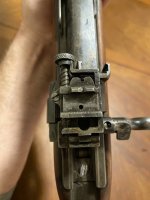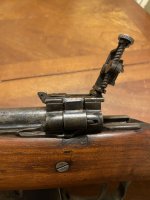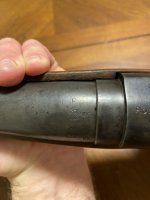Hey Folks,
New to the Ross rifle, but always admired it, so when I saw one for a few hundred bucks I jumped on it. Upon arrival after a lengthy drive I found the barrel drilled in three places, the previous owner told me about this, but what I didn’t know was that the centre hole is ~5mm (3/16”) deep at 49cm (19-1/4”) back from the muzzle. He had shot it a number of times with modern 303 hunting ammo, but is this safe long-term?
ALSO the rear sight also flops freely and bolt sticks quite badly if pulled all the way to the rearward travel stop. Neither as concerning as the bore holes, but input here is also appreciated.
New to the Ross rifle, but always admired it, so when I saw one for a few hundred bucks I jumped on it. Upon arrival after a lengthy drive I found the barrel drilled in three places, the previous owner told me about this, but what I didn’t know was that the centre hole is ~5mm (3/16”) deep at 49cm (19-1/4”) back from the muzzle. He had shot it a number of times with modern 303 hunting ammo, but is this safe long-term?
ALSO the rear sight also flops freely and bolt sticks quite badly if pulled all the way to the rearward travel stop. Neither as concerning as the bore holes, but input here is also appreciated.













































































